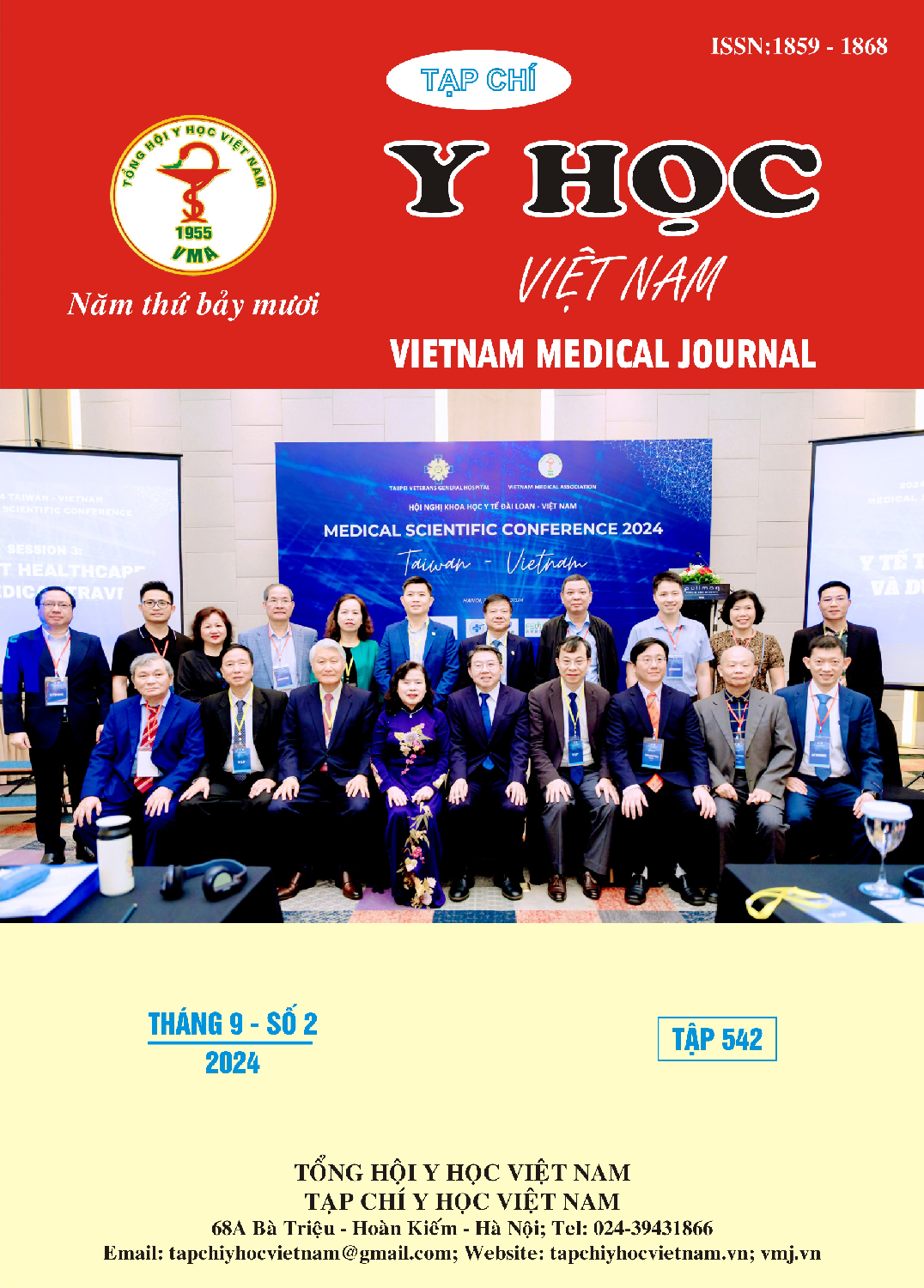FACTORS RELATED TO OSTEOPOROSIS, RISK OF FRACTURES IN ELDERLY PEOPLE USING PROTON PUMP INHIBITORS
Main Article Content
Abstract
Background: Proton pump inhibitor use and osteoporosis are two of many common comorbid conditions in the elderly. Objective: to investigate the relationship between time and dose of proton pump inhibitor use and osteoporosis, and the risk of bone fractures in elderly people using proton pump inhibitors at the Geriatrics clinic and the Musculoskeletal clinic Joints of Ho Chi Minh City University of Medicine and Pharmacy Hospital. Methods: Cross-sectional study was conducted on 220 patients aged 60 years and older, continuously using proton pump inhibitors (PPIs) for ≥ 4 weeks within 6 months visiting the University Medical Center. Ho Chi Minh City Pharmacy from December 2022 to June 2023. Results: when the duration of using proton pump inhibitors increases by 1 week from the 10th week, the risk of osteoporosis will increase by 1,088 times ( 95% confidence interval is 1.017 – 1.165) with p = 0.015. No relationship has been recorded between the dosage of Esomeprazole, Pantoprazole, Rabeprazole and osteoporosis in the elderly. No relationship has been recorded between the duration of use of proton pump inhibitors, the dose of Esomeprazole, Pantoprazole, Rabeprazole and the high risk of bone fractures in the elderly. Conclusion: There is a relationship between the duration of use of proton pump inhibitors and the risk of osteoporosis in the elderly.
Article Details
Keywords
elderly, osteoporosis, risk, fractures, proton pump inhibitors.
References
2. C. Reyes, F. Formiga, M. Coderch, et al. Use of proton pump inhibitors and risk of fragility hip fracture in a Mediterranean region. Bone. 2013;52:557-61.
3. J. H. Park, J. Lee, S. Y. Yu, et al. Comparing proton pump inhibitors with histamin-2 receptor blockers regarding the risk of osteoporotic fractures: a nested case-control study of more than 350,000 Korean patients with GERD and peptic ulcer disease. BMC Geriatr. 2020;20:407.
4. J. J. Kim, E. J. Jang, J. Park, H. S. Sohn. Association between proton pump inhibitor use and risk of fracture: A population-based case-control study. PLoS One. 2020;15:e0235163.
5. J. R. Lewis, D. Barre, K. Zhu, et al. Long-term proton pump inhibitor therapy and falls and fractures in elderly women: a prospective cohort study. J Bone Miner Res. 2014;29:2489-97.
6. J. W. Kim, S. Park, J. Y. Jung, et al. Prevalence and Factors of Osteoporosis and High Risk of Osteoporotic Fracture in Patients with Ankylosing Spondylitis: A Multicenter Comparative Study of Bone Mineral Density and the Fracture Risk Assessment Tool. J Clin Med. 2022;11.
7. K. M. Aasarod, M. P. Mosti, M. T. Finstad, et al. Do patients with gastroesophageal reflux disease exhibit compromised bone quality prior to proton pump inhibitor therapy? Bone Rep. 2021;14:101095.
8. M. Zwart, R. Azagra-Ledesma, M. Saez, et al. Predictive capacity of FRAX in a spanish region with a hip fracture rate close to the national mean. BMC Musculoskelet Disord. 2023;24:577.
9. R. Gingold-Belfer, Y. Beloosesky, A. Amara, et al. Different effects of chronic omeprazole use on osteoporotic fractures rate in the elderly. Br J Clin Pharmacol. 2023.
10. S. W. Lai, C. H. Lin, C. L. Lin, et al. Proton pump inhibitors therapy and the risk of hip fracture in older people in Taiwan. Eur Geriatr Med. 2018;9:169-174.


